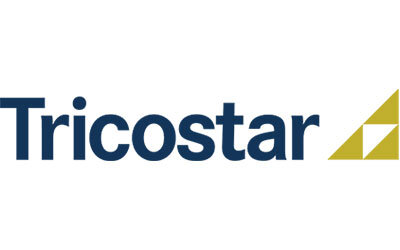Software & Technology Since The 1980s
How Business Software Has Developed Over Time
At Tricostar, we are proud to say that we’ve been around for a very long time! As a company, we have been part of the most amazing technological revolution - with the development of computers and the Internet changing the way that we live our daily lives and do our daily business.Our main product, Timebase, was initially developed in 1988, and has changed dramatically through the decades, whilst still maintaining its core function of recording time efficiently and reliably. We’re delighted to say that we have adapted our products over time to align with the latest technology, always staying on top of our clients’ needs and the trends in how organisations operate.So how has the computer technology and software world developed since the 1980s? More specifically, how have businesses been impacted by the change in business software and the systems that help them operate?
Hardware
In terms of hardware, we can see a massive shift in the technological advances of mobile, with tablets and mobile devices becoming the norm across the world in these modern times. The explosion of mobile technology has catapulted us into a new age of personal device, which has impacted business and leisure.However, in terms of the more traditional desktop PC and laptop technology, we have also seen dramatic changes.For a start, the size of monitors has rocketed, with many now reaching 27 inches. Originally, the standard size PC monitor was just 14 inches. The functionality of hardware has also developed, from PCs being solely used for word processing and gaming, they are now used for much more – including watching videos, editing different media, creating works of art, browsing the web, and shopping.Memory and hard drive storage on your typical PC has gone from around 640KB RAM to 4G of RAM and additional hard drive storage – with the possibility of attaching an external drive.Computers are now much faster and much more flexible, both in the home and in the office.
Business Software
Many would argue that enterprise software was pioneered by IBM in the early 1980s, with its aggressive moves into the PC market during this period.With the purchase of DOS by Microsoft and the release of MS-DOS as part of IBM’s new PC, things started to take off. After an uneasy beginning to the relationship, Microsoft and IBM moved forward to become the enterprise-standard for computer technology.In 1984, Apple released Macintosh, and the following year, Microsoft release Windows 1.0. Around the same time, major players such as Oracle and SAP were starting to make an impact, highlighting the potential that databases had to make a difference to businesses.In the late 1980s, developers began to understand the significance of APIs (Advanced Programming Interfaces), which allowed software creators to develop additional solutions on top of the framework that was already there. Vendors were happy about this because it made their solutions more flexible, adding important value to their product and making it appealing to more businesses.In 1990, Tim Berners-Lee successfully developed and presented the World Wide Web, and three years later, important web browsers such as Mosaic and Netscape were released. This development of the Web revolutionised the technology world, and in 1995, Microsoft released Internet Explorer. In the same year, Amazon and eBay were started, and the world witnessed the birth of E-Commerce.The worry about the ‘Millennium Bug’ forced many organisations to invest heavily in upgrading their systems to protect against potential failure. Following the relative lack of issue, spending on enterprise software reduced and many of the large corporations started acquiring smaller firms in the early 2000s for financial reasons; this was a period of consolidation in the industry.In 1999, one of the world’s most successful CRM firms, Salesforce, appears as a solely online-based solution – promoting their dedication to the ‘cloud’ and their lack of traditional software installations.The development of cloud computing, or SaaS (Software as a Service), revolutionised the nature of enterprise software. Organisations were now offered the opportunity to run critical systems without massive implementation costs, taking advantage of increased flexibility and instant access from multiple devices.The popularity of cloud computing has increased throughout the past decade, with improved internet speeds and better security and reliability, it is becoming a highly appealing option for many businesses to operate online.
How Have We Developed?
Despite our long history in enterprise software for the public and private sectors, we pride ourselves on not falling behind. This is why our 100% web-based time recording software Timebase is now available via the cloud on Windows Azure.Helping organisations become more efficient is something that we excel in, and the technological advances over the past decades have enabled us to offer the benefits of shared services and improved organisational collaboration to both the public and private sectors.For more information about the enterprise solutions that we create at Tricostar, get in touch by calling 0208 292 2660 or by contacting us online.
